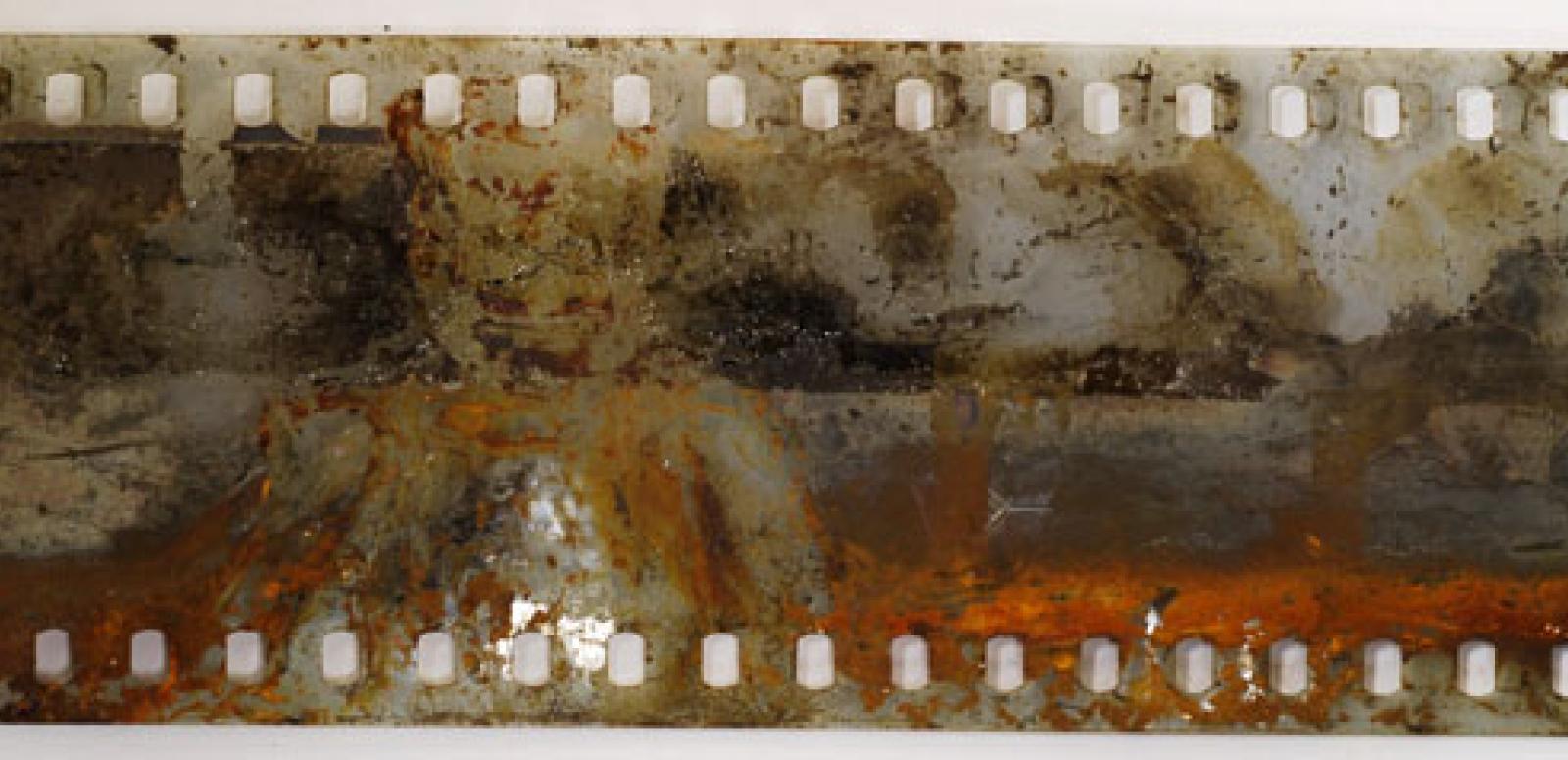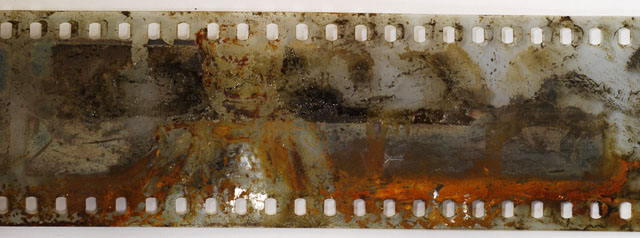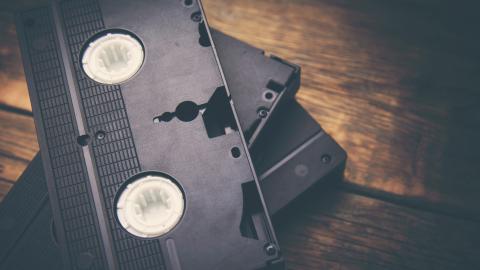

Dos and don'ts for flood-damaged audiovisual
Film and tape is very susceptible to damage from water, especially when contaminated with dirt and debris. Each type of object is affected in a slightly different way and requires a slightly different approach in preventing further damage. In all cases, the sooner you can start recovering the objects, the greater chance of minimising damage. The NFSA can assist by providing information on the best ways to salvage your flood damaged objects and give these precious objects the best chance of recovery.
The first step is to make sure that the object has actually been affected by the flood waters. Often the film can or tape box will provide enough protection to prevent the water actually touching the object. If the object is not touched then just protect it from further damage that is likely to be caused by the damp conditions such as mould.
A second step is to keep any identifying information with the object. There will probably be a stage at which some sort of prioritisation will be necessary and deciding which object to spend the time and money on will be tough enough without having to wonder which tape or film has the most important content.
Here are some simple steps to help salvage and stabilise your audiovisual objects. These are not conservation treatments and objects should still be examined and possibly treated by an experienced conservator before you attempt to play the object.
Film
The biggest threat to flood affected film is mould and bacteria. Both these will feed off and destroy the film very rapidly. Both mould and bacteria may pose a health risk to people. If the film appears to be mould affected, take all the precautions necessary to avoid skin contact and do not breathe in the mould spores.

If your film has been affected by floods then:
Film dos
- Rinse the film with the cleanest water you can find to wash off loose dirt or mud.
- Label the film reels with some form of identifying system. For example, a known title or made up tile to describe the content.
- If you have access to a freezer, place the film in a plastic bag, remove as much air as possible and seal the bag tightly. Label the bag and then place the film in a freezer. Arrange for conservation work as soon as possible. Visit the NFSA, State Library of Queensland or AICCM websites for more information on conservation.
- If you do not have access to a freezer, place the film in a bucket of cool water and change the water each day until you can arrange for conservation work. This will keep the film in reasonable condition for about two weeks before there is likely to be a serious problem with bacteria.
- Prevent the film from further damage
Film do nots
- Do not unwind the film to see if it is OK. The film may have stuck together and any attempt to unwind the film may result in the film being permanently damaged.
- Do not try to dry the film until you have received advice from a conservator on the best way to do this.
Magnetic tape
Magnetic tapes are objects such as audio and video cassettes and reel to reel audio. Again with magnetic tapes, mould is a problem and appropriate care must be taken in respect to your health. The most immediate problem is the potential for the part of the tape, known as the binder, to decay.
MiniDV tapes are made from different materials and these are very sensitive to water. The recovery rate from miniDV that have been affected by floods is not high so be prepared for some losses with these objects.
If your tapes appear to have been affected by flood water then:
Tape dos
- Rinse the object with the cleanest water available. However if possible, do not use tap water as the chlorine often added to help purify the water may damage the tape, bottled or distilled water is preferable.
- If there are any labels that are loose or have washed off, identify the tape and label as belonging to each other so these do not become separated. It is especially import to label the object as without any identifying information or the ability playback the content will be unknown.
- Keep the object cool, but do not freeze it.
- Protect the tapes from further damage.
- If possible, send the tape for conservation treatment before it dries out.
Tape do nots
- Do not attempt to play the tape ‘just to see if it is OK’. This will not only result in damage to the tape but also your playback equipment.
- Do not freeze the tapes.
- Do not try to dry the tapes in an oven.
Discs
Acoustic recordings vinyl records (LP’s and 45’s) and optical discs, such as Laserdiscs, CDs, DVDs, BluRays, are known as discs. While all these objects are fairly resistant to the immediate effects of floodwater, there may be long-term effects, especially for optical discs.
Mould may be found on some discs but it is more likely to be growing on the paper covers and inserts. If there are signs of mould, take all the precautions necessary to prevent skin contact and breathing in the spores.
Discs that may have no permanent label, for example CDs or DVDs containing home movies, can be temporarily labelled using cardboard and string.
Disc dos
- Rinse the disc with the cleanest available water.
- If the centre label on a vinyl disc is loose or has washed off, identify the disc and label as belonging to each other so these do not become separated.
Once you have rinsed the discs air dry the discs in a dust free environment. - Have vinyl discs properly cleaned before playing them.
- CDs and DVDs that you have the rights to copy (i.e. non commercially produced) should be duplicated as soon as possible.
Disc do nots
- Do not scrub or wipe acoustic (vinyl) discs to remove any mud or debris that does not rinse off easily. Scrubbing will scratch the disc.
- Do not scrub or wipe the label side of a CD. The label may be made from materials that are affected by water and wiping may damage the label which actually helps protect the most vulnerable part of the CD.
- Do not try to dry the discs in an oven.
In all instances, it is important to seek professional advice before trying to do any more than is suggested above. Audiovisual objects are very fragile and well-meaning attempts to recover the objects often lead to the total loss of the object. Remember that most damage occurs after the flood, so quick stabilising action and seeking professional advice is the best way to ensure that your precious objects will stand a chance of survival.
The National Film and Sound Archive of Australia acknowledges Australia’s Aboriginal and Torres Strait Islander peoples as the Traditional Custodians of the land on which we work and live and gives respect to their Elders both past and present.


